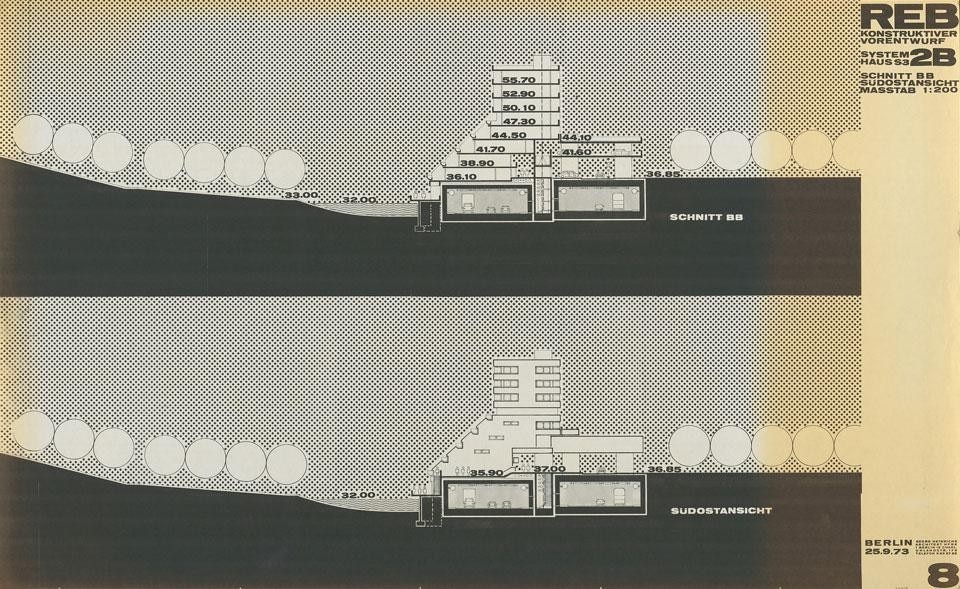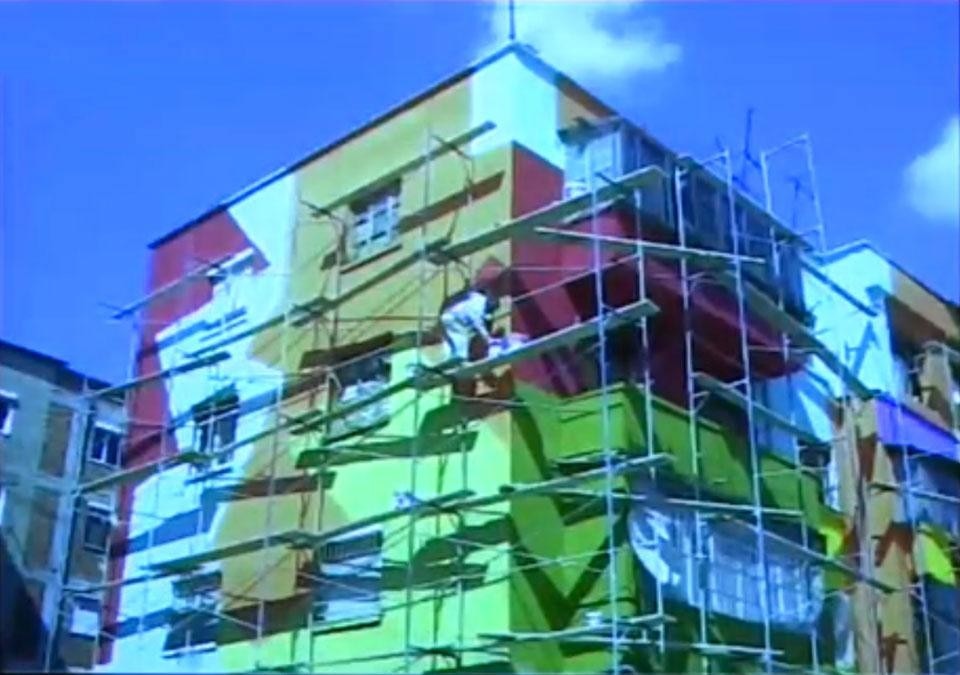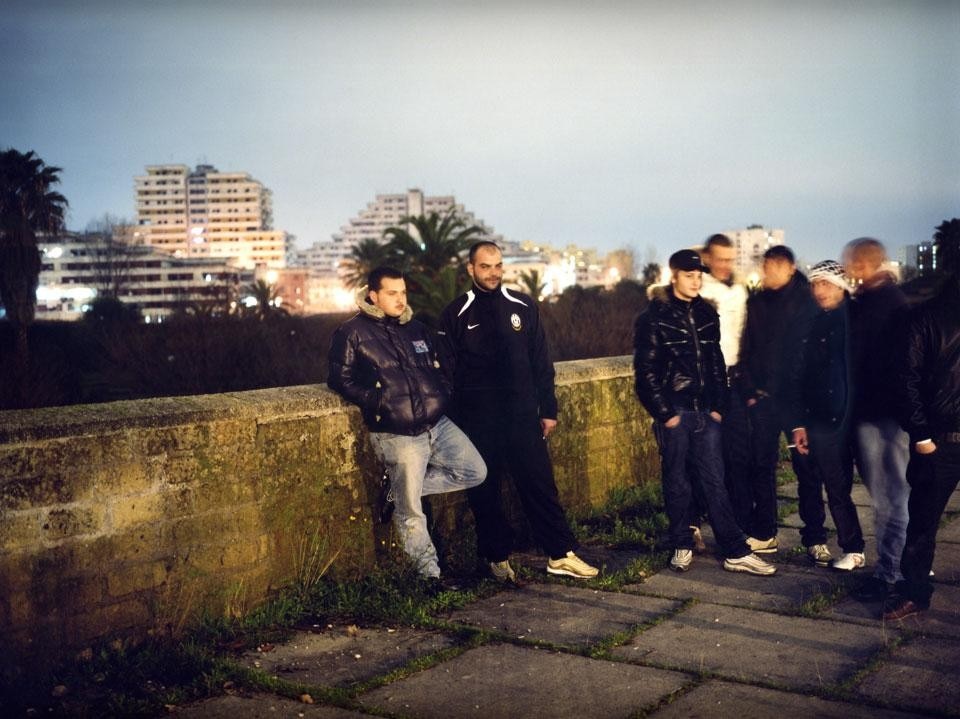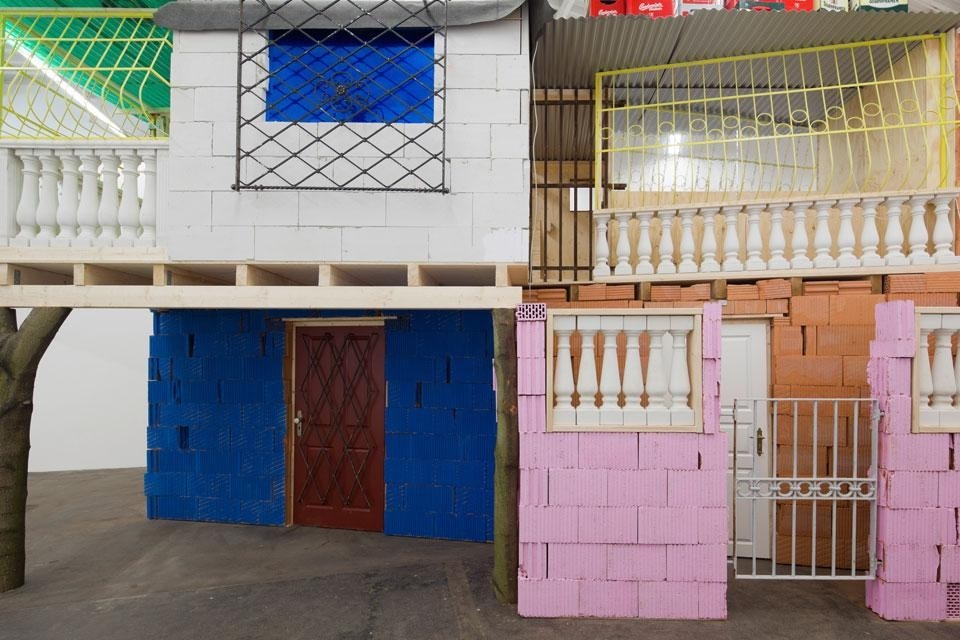This is evident from the juxtaposition of the early, analytical Dan Graham — Split-Level, 'Two Home Home', Jersey City (1966) and Homes for America (1971-1972) — with the late, experiential Carl Andre — 07515 Karlsplatz (1992). And, moreover, the juxtaposition of the late, experiential Dan Graham — Portal (1997) and Children's Pavilion (1991), a playful collaboration with Jeff Wall — with the photographs of Tobias Zielony, in which people and public housing are frozen amid their iconographies of provocation and menace.
This absence of a controlling principle is particularly unusual in a show about architecture, and perhaps this show is better described as a show about art about architecture. The limit-case of these physical thought experiments is a full-scale installation of Bruce Nauman's Room with My Soul Left Out, Room That Doesn't Care (1984), in which the visitor enters one of four perpendicular hallways that meet in a central shaft. Walking out over a metal grate in the middle, one corridor disappears directly downwards, another rises out above. It's architectural minimalism at its most severely rectilinear, a intersection with every — or no — path out.

The most dazzling and intrepid work in the show isn't in the show at all, but plays out as the star of a video, Anri Sala's Dammi i Colori. In a dim underground screening room, the projection shows a grim nighttime cityscape — the camera seems to shake slightly as it slowly scans across images of a continuous shot of a ruined city street. A monotone superimposed above it describes the scene in monotone Albanian: "The city was dead. It looked like a transit station, where one could stay only if waiting for something." It's followed by a mute, motionless shot that frames a building fitted for painting or construction; as a light source slowly crosses it, the grid of scaffolding draws a fretwork of shadows across the façade's banks of orange, goldenrod and pale green paint.

Rama's first major project in the capital was to paint buildings along major avenues fierce, riotous colours: with architectural as well as political motives. The first was directed at the modifications to dwellings that proliferated after the collapse of the regime: "in adding their balconies or another floor or a shop [they] were not concerned with the form that would be created..." The colours would serve to "bind together all the volumes."
Rama's more audacious goal, however, was social and political: to instigate, through the wildness and intensity of the colours and their patterns, a kind of civic dialogue

Polls were taken to ascertain the reaction. Some citizens liked the chosen shades, many didn't. But when asked if they wanted to continue the project, there was an overwhelming majority in favour. "The hottest discussion in the coffee bars, in homes, in the streets, was what are the colours doing to us." The mere application of paint, it seemed, had managed to create, through its provocation, a new concept of the space and consequently a sense of civic order. Elsewhere, Rama said colours are cosmetic "like a dress, or like lipstick." But in Tirana, "they're organs." Zachary Sachs (@cerealrecords)
Architektonika 2
Hamburger Bahnhof
Invalidenstraße 50-51, Berlin


